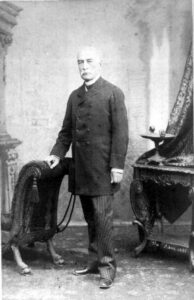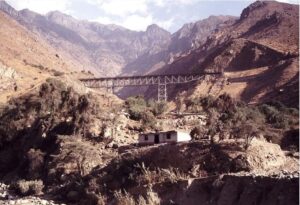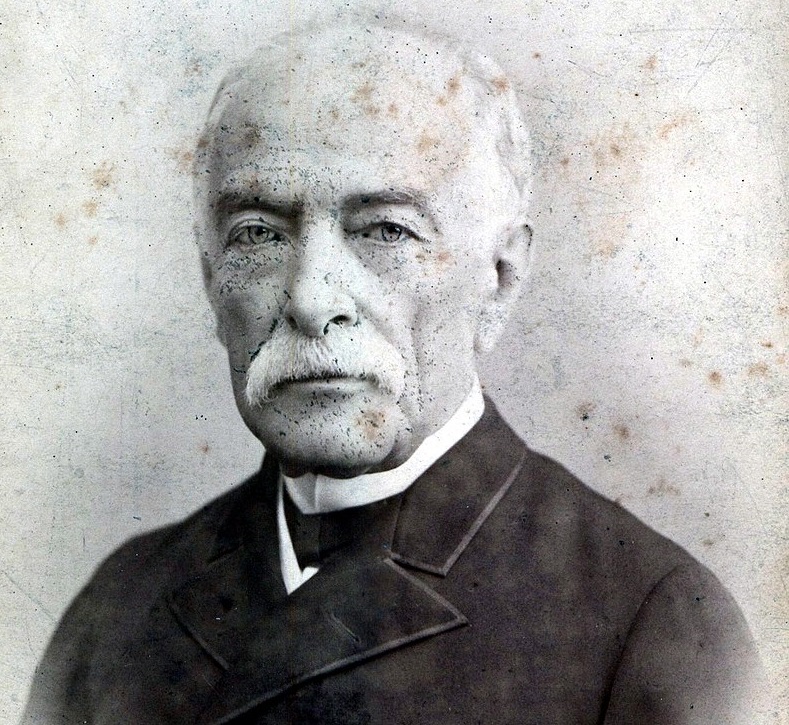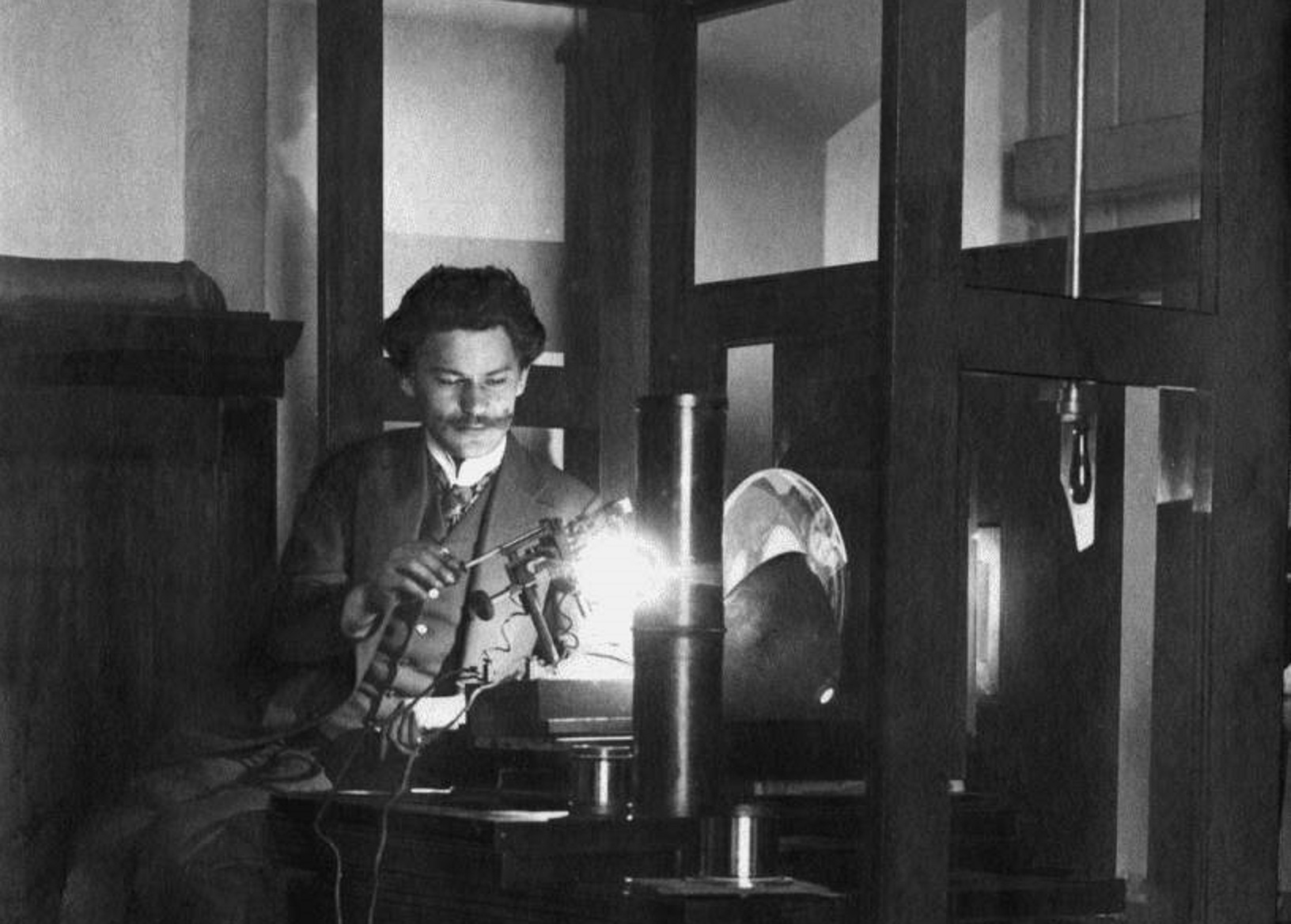‘Ernest Malinowski 1818-1899. Polish Engineer. Peruvian Patriot. Hero of the Defence of Callao in 1866. Builder of the Central Trans-Andean Railway.’ Such an inscription adorns one of the monuments in the Peruvian Andes. Adam Ernest Malinowski was a Polish emigrant who designed and built the world’s highest railway line in Peru.
by Piotr Bejrowski
The son of a wealthy nobleman, an army officer in the Duchy of Warsaw who was a member of the uprising parliament and a participant in the November Uprising, after which the entire Malinowski family (including 13-year-old Adam) was forced to leave the country. Malinowski’s studies at the Krzemieniec Secondary School were interrupted and he emigrated to France via Dresden. He graduated from high school in Paris, then studied at the Polytechnic School and the renowned School of Roads and Bridges, from which he graduated with honors in 1838.
As an engineer, he worked on many construction projects, including railway lines near Paris, the port in Algiers and the regulations of the Meuse River. In 1852, through French engineering organizations, he signed a groundbreaking six-year contract to work in Peru that would change his career. Shortly after arriving, he helped establish the country’s first technical college and participated in the reform of the monetary system. He repaired bridges, advised on mining and also influenced the education of the next generation of engineers. He designed not only railroads, but also entire cities, he marked out a new system of streets and squares in Arequipa, which had begun to be rebuilt after the war.

Malinowski quickly began to treat Peru as his second homeland, deciding to extend his contract and he soon became a well-known and respected person in the country. When the Spanish fleet attacked the Callao fort near Lima in 1866, he directed its defense and fortification works. He performed the task very well: the cannons were brought, and towers and movable platforms were built and camouflaged. As a result, the city was defended and enemy ships suffered significant losses. After this success, Malinowski was awarded honorary citizenship and the title of national hero.
For several centuries, the Andes were considered an insurmountable obstacle. For several dozen years, people thought about how to solve the problem of transporting raw materials and agricultural products from inland to the capital and the port on the Pacific Ocean. In 1868, the Peruvian authorities issued a decree on the construction of a railway through the Andes and created a competition for the investment. Ultimately, it was won by the American entrepreneur Henry Meiggs, who decided to entrust the design and construction to Malinowski. After making the appropriate measurements, the Pole presented the idea of tunneling through the Andes. Initially, his ideas were criticized and rejected for being too bold and therefore impossible to implement.

However, construction began in January 1870. The Central Trans-Andean Railway required technologically advanced structures and the carrying out of works in very uncomfortable conditions. Recently invented dynamite and drilling equipment, modern for the second half of the 19th century, were used in the mountains. At an altitude of over 4,700 meters above sea level a tunnel of 1173 meters was drilled. The tallest, a 170-meter-long viaduct over the Verrugas Gorge is based on a 77-meter pillar. In total, several dozen bridges and tunnels were built. Due to altitude sickness, only the Peruvian Indians could work in the highest parts of the Andes. Over ten thousand workers participated in the construction, although unfortunately several thousand died as a result of an epidemic. The first part was put into operation in 1878. After a break caused by the economic crisis and the war with Chile, works resumed in the 1890s and continued until 1908, after the death of the main builder.
Despite many pessimistic opinions at home and disbelief abroad, the railway line built according to Malinowski’s assumptions was completed. It is almost 350 kilometers long and connects the Callao port near Lima with the city of Huancayo. Until Chinese investments in Tibet, it was the highest railway in the world. Currently, it is used primarily by freight and tourist trains. All major technical magazines in the world wrote about the spectacular construction in the Andes in the 19th century. The Polish engineer personally supervised the work on site, in the snow and heat. He imported materials, kept accounts, and corresponded with suppliers. Like a climber, he descended on ropes to examine the ground at the base of the rock at the planned bridge pillars.

Malinowski also worked on the construction of railway lines in neighboring Ecuador, and after returning to Peru in 1886, he devoted himself to scientific and social activities. He was a founding member of the Geographical Society in Lima, lectured at the university, published books and articles, supervised the construction of the hospital, and was a charitable contributor. He participated in designing maps, which became the basis for delimiting the borders between Peru, Brazil and Ecuador. He was a wealthy man, he ran an open house, supported Polish engineers, researchers and travelers, and collaborated with the Society of the Polish National Museum in Rapperswil.
Malinowski died on 2 March 1899. On the 100th anniversary of his death, at the Ticlio Pass, at 4,818 meters above sea level, at the highest point of the Peruvian railway, a seven-meter monument dedicated to the memory of this outstanding engineer was erected. The monument, in Polish and Spanish, reads: “Polish engineer, Peruvian patriot, defense hero of Callao 1866, builder of the Central Trans-Andean Railway.”
Author: Piotr Bejrowski
Translation: Mikołaj Sekrecki





